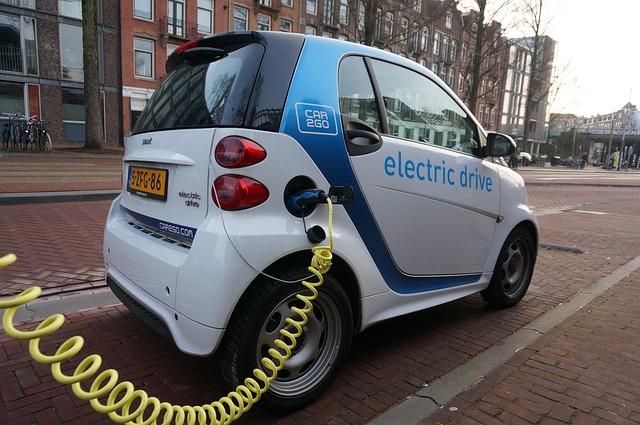Powering Profits: Why EV Charging is the Next Big Investment Opportunity
The electric vehicle (EV) market is surging, driven by growing awareness of climate change, government regulations, and consumer demand for sustainable alternatives to fossil fuel-powered cars. As this market expands, one crucial infrastructure component stands out as an investment goldmine: EV charging stations. In the following sections, we will explore why investing in EV charging infrastructure is not only a smart financial decision but also a critical step in reshaping our transportation landscape.
The Electrifying Growth of Electric Vehicles
Over the past decade, electric vehicles have shifted from a niche segment to a mainstream choice for consumers. Car manufacturers worldwide have recognized the shift in consumer preferences and are rapidly electrifying their fleets. According to industry reports, global EV sales are projected to skyrocket, potentially surpassing 50% of all vehicle sales by 2030. This shift creates a significant demand for charging infrastructure, paving the way for lucrative investment opportunities.
Understanding the EV Charging Market
The EV charging market can be categorized into three primary segments: residential charging, public charging, and fast-charging networks. Each segment presents unique investment opportunities and challenges. Residential charging is essential for daily users, while public charging plays a critical role in long-distance travel. Fast chargers, typically located along highways, are becoming increasingly important as more consumers adopt EVs and seek quick charging solutions.
Residential Charging
Investing in residential charging solutions can offer potential returns, especially as real estate companies start to incorporate EV charging infrastructure into new developments. Homeowners are increasingly looking for properties with built-in charging stations as they transition to electric vehicles. This demand drives the growth of companies that manufacture and install home charging units, creating a robust market for investors.
Public Charging
Public charging stations are essential for increasing the accessibility of electric vehicles. The proliferation of such stations is crucial in attracting EV owners who often face “range anxiety.” Numerous players in this space, including startups and established companies, are racing to install charging stations in urban areas, shopping centers, and other public venues. The demand for public charging infrastructure will only intensify as more people adopt electric vehicles, making this a potentially lucrative investment landscape.
Fast-Charging Networks
Fast charging networks are set to play a pivotal role in the ongoing electrification of transportation. These are typically located along major highways to facilitate long-distance travel and help alleviate concerns about running out of charge. Companies like Tesla and ChargePoint are leading the charge in establishing comprehensive fast-charging networks. These networks often provide lucrative business models for investors, including pay-per-use fees and partnerships with commercial establishments.
Government Incentives and Regulations
One of the significant factors driving the growth of the EV charging market is government support. Many governments worldwide are implementing incentives and subsidies to promote the installation of charging stations. For instance, various federal and state programs offer grants and tax credits for the development of EV infrastructure. These incentives not only reduce the upfront costs for companies but also create a favorable regulatory environment for investment.
Furthermore, regulations mandating the inclusion of EV charging infrastructure in new constructions are becoming increasingly common. As cities and states adopt stricter emissions targets and commit to renewable energy initiatives, the demand for EV charging solutions continues to grow, presenting further investment opportunities for those looking to enter the market.
The Shift to Renewable Energy
Integral to the future of EV charging is the transition to renewable energy sources. As countries strive to reduce carbon emissions, integrating renewable energy into EV charging stations becomes crucial. Companies that can successfully leverage solar power, wind energy, and other sustainable resources can differentiate themselves in the market, positioning themselves as leaders in the EV charging ecosystem.
Investors who focus on companies or technologies that promote renewable energy integration will likely find themselves on the cutting edge of a green revolution. This approach not only satisfies consumer demand for sustainable energy but can also lead to significant cost savings over time.
Challenges Ahead
While the opportunities for investment in EV charging are vast, it is essential to note that the landscape is not without its challenges. Competition is intensifying, with numerous stakeholders entering the space, from startups to established oil and gas companies adapting to the new energy landscape. Market saturation in certain areas is a real concern, especially where multiple providers are competing for the same customers.
Technological advancements also present challenges. Charging technology is rapidly evolving, with new solutions being developed to increase charging speed and efficiency. Investors must remain agile and informed to ensure that their investments align with the latest technological trends. Additionally, the need for standardized infrastructure to accommodate various EV models remains a topic of ongoing discussion among industry players.
Strategic Partnerships and Collaborations
One of the best strategies for navigating the evolving EV charging landscape is to pursue strategic partnerships and collaborations. Public-private partnerships can facilitate the rollout of EV charging stations and leverage various resources to maximize investment potential. Collaborating with tech companies, energy providers, and municipalities can lead to innovative solutions and enhance profit margins.
Additionally, partnerships with automakers can create unique value propositions that appeal to consumers. For example, automakers may want to establish exclusive charging networks for their customers, leading to significant investment returns for those who participate in such initiatives.
Conclusion: A Bright Future for EV Charging Investments
The electric vehicle revolution is not just a passing trend; it is a fundamental shift in how we view transportation and energy consumption. Investing in EV charging infrastructure represents a unique opportunity for those seeking to capitalize on the growing demand for electric vehicles and a cleaner future. As government support, technological advancements, and consumer preferences continue to evolve, the prospects for growth in this sector are immense.
Investors should consider the opportunities presented by residential, public, and fast-charging solutions while remaining mindful of the challenges ahead. By staying informed, developing strategic partnerships, and focusing on sustainability, investors can position themselves to harness the potential of this transformative market. In a world increasingly oriented towards green technology and sustainable energy, EV charging stands out as a beacon of growth—a profitable investment opportunity that is just beginning to rev its engines.


